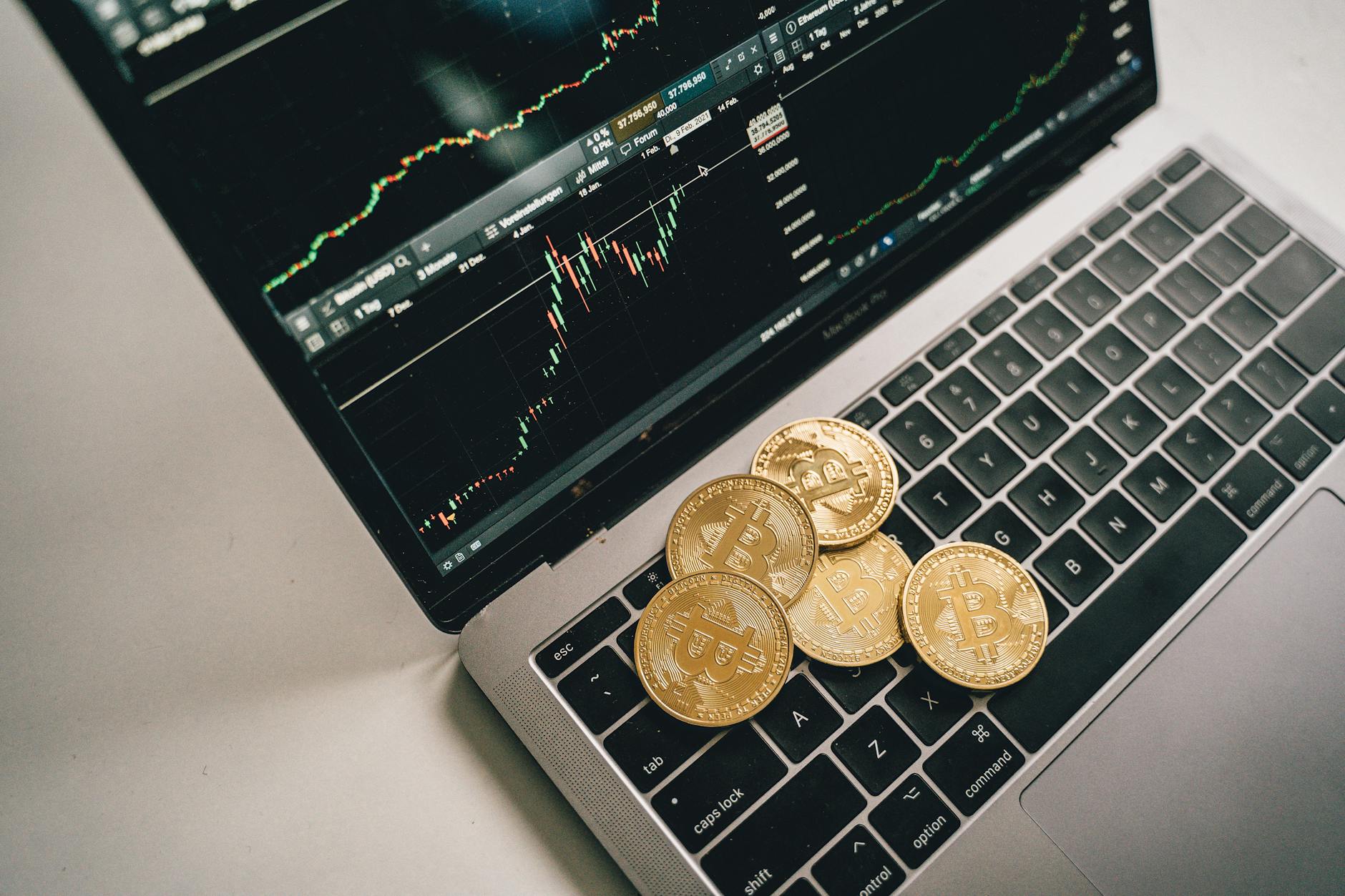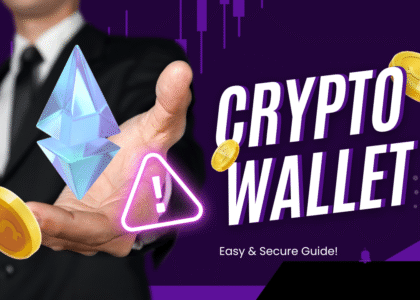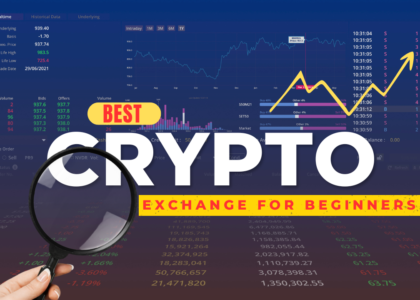Crypto day trading has become a popular way to capture quick profits by buying and selling cryptocurrencies within short time frames. The key to success lies in choosing the right trading platform. You’ll want a platform with strong liquidity, so your trades execute fast, low fees to keep more of your gains, solid security to protect your assets, and easy-to-use tools for smart decision-making.
This post will break down the best crypto day trading platforms today, focusing on those criteria to help you find the one that fits your trading style and goals. Whether you’re a beginner or a seasoned trader, picking the right platform makes all the difference in navigating the market efficiently and safely.
Best Crypto Day Trading Platforms in 2025
Choosing a day trading platform can feel like walking into a huge market full of options — each promising speed, security, and the best deals. If you want to trade crypto quickly and confidently, you need a platform that fits your style and skills. Let’s look at some of the top choices for 2025. This list covers everything from beginner-friendly interfaces to professional-level tools, so you can find the right fit no matter your experience.
Coinbase: Best for Beginners with User-Friendly Experience
If you’re just starting out, Coinbase is one of the easiest platforms to get comfortable with. Its clean design and intuitive layout guide you through the buying, selling, and trading process without overwhelming jargon or clutter. The platform also offers educational resources that simplify crypto basics.
Coinbase is known for its strong regulatory compliance, protecting your funds and building trust. While fees are slightly higher than some other platforms, you’re paying for peace of mind and an easy user experience.
Key features include:
- Simple mobile and desktop apps
- Access to popular cryptos like Bitcoin, Ethereum, and more
- Built-in security measures like two-factor authentication (2FA)
The platform is perfect if ease of use and security are your top priorities.

Photo by Tima Miroshnichenko
Binance.US: Low Fees and Extensive Crypto Listings
For traders looking to keep costs down and access a wide variety of coins, Binance.US is a strong contender. This platform offers some of the lowest trading fees around, making it ideal for frequent day traders who want to keep as much profit as possible.
Binance.US shines with a huge selection of cryptocurrencies — over 500 coins — letting you diversify your trades beyond the usual suspects. The platform includes advanced charting tools and fast order execution, so you can react quickly to price moves.
Benefits of Binance.US:
- Fee discounts based on trading volume or holding their BNB token
- Deep liquidity for many trading pairs
- Charting tools and real-time data
If you want low fees paired with a massive crypto lineup, Binance.US is worth a closer look.
Kraken: Advanced Security and Institutional Features
Security matters most with your money, and Kraken is one of the most trusted names out there. It has built a solid reputation for protecting user funds and offers advanced features tailored to serious traders — including institutions.
Kraken supports a rich set of order types, margin trading, and futures contracts. Its security extends to industry-best practices like cold storage, encrypted data, and regular audits. Plus, it offers responsive customer service for traders who need help.
Kraken highlights:
- Strong security protocols and insurance coverage
- Margin and futures trading capabilities
- High liquidity and performance reliability
For traders focused on safety and deeper trading tools, Kraken delivers a professional-grade experience.
Gemini: Regulatory Compliance and ActiveTrader Tools
Gemini stands out for its focus on compliance and a polished interface designed for active traders. With strict regulatory oversight, Gemini builds confidence for traders who want a platform that follows the rules closely.
The ActiveTrader interface offers advanced charting, order types, and fast execution without sacrificing ease of use. Gemini also integrates staking and incentives, letting you earn rewards on certain assets.
Reasons to choose Gemini:
- Regulatory-first approach with clear transparency
- Powerful ActiveTrader platform for more engaged trading
- Added features like staking rewards
Gemini is a solid choice if you want strong regulation paired with tools to trade actively and securely.
Crypto.com: Mobile-First with Derivatives and Rewards
If you’re always on the go, Crypto.com caters specifically to mobile users with a sleek app designed for quick trades. It offers an impressive range of features, including derivatives trading (like futures and options) for added flexibility.
Crypto.com’s ecosystem also includes rewards such as cashback on card purchases and interest on staking, making it more than just a trading platform. This blend appeals to traders who want a versatile app to support their entire crypto journey.
What makes Crypto.com stand out:
- Smooth mobile experience with real-time alerts
- Access to derivatives and margin markets
- Crypto rewards and benefits integrated into the platform
For traders who live on their phones but want advanced crypto trading options, Crypto.com fits the bill.
Each of these platforms offers something different for day traders — from beginner-friendly simplicity to robust features for pros. Think about what matters most to you: low fees, security, coin variety, or mobile access. That clarity will help you pick a platform designed for your 2025 trading success.
Learn more about how to choose the right platform on NerdWallet’s guide to the best crypto exchanges in 2025, which breaks down options and fees clearly for beginners and pros alike.
👉 Click here to read the ultimate beginner’s guide to buying your first Bitcoin in 2025.
Essential Features for Effective Crypto Day Trading Platforms
Choosing the right crypto day trading platform means more than just picking a popular name. The tools and features available can make or break your trading success. Effective platforms serve the needs of fast-paced decision-making, and that starts with core essentials like liquidity, fees, charting, automation, and security. Let’s look at what these features really mean for you as a day trader.
Liquidity and Trading Volume Impact on Day Trading
Liquidity is the lifeblood of day trading. It determines how quickly and easily you can buy or sell an asset without causing big price swings. High liquidity means plenty of buyers and sellers are active in the market, so your orders get filled instantly, minimizing slippage. When trading cryptocurrencies like Bitcoin or Ethereum, focusing on coins with strong trading volume is crucial to avoid stalls or unexpected price gaps.
Platforms boasting consistently high liquidity allow you to enter and exit trades swiftly, capturing small price movements that add up. This is especially important during volatile market conditions when every second counts. According to Gemini’s cryptopedia on day trading, selecting assets with high liquidity is key to smooth trade execution and reliable pricing.
Fee Structures and Cost Efficiency for High-Frequency Traders
When you’re trading multiple times a day, fees can chip away at your profits fast. Look for platforms that offer transparent and low fee structures. Most exchanges charge a percentage of your trade volume—often between 0.1% and 0.5%—but some offer discounts depending on your monthly trading volume or if you hold their native tokens.
High-frequency traders benefit from:
- Low maker and taker fees: Especially important if you place limit orders (maker) or market orders (taker).
- No hidden or withdrawal fees: Keeps your costs predictable.
- Fee tiers: Reduce fees as your monthly trading volume increases.
For example, Kraken’s fee schedule offers competitive rates with discounts that kick in as you trade more, helping you keep costs manageable on frequent trades. A clear fee structure helps you plan your trades with confidence, without worrying about surprise charges eating into your gains.
Advanced Charting and Order Types for Day Traders
Basic buy/sell buttons don’t cut it for day traders. You want platforms that provide comprehensive, real-time charting tools with various technical indicators and drawing tools built right in. Features like candlestick charts, volume overlays, RSI, and moving averages help you spot trends and entry-exit points faster.
Alongside charts, advanced order types give you control over how your trades execute, including:
- Stop-loss orders: Limit potential losses by automatically closing a position at a set price.
- Take-profit orders: Lock in gains when a target price is reached.
- One-Cancels-the-Other (OCO): Combines stop and limit orders for flexible risk management.
Platforms like Crypto.com support these order types and powerful charting, streamlining your trading decisions. These tools help protect your investments and maximize profits without needing to watch the market 24/7. For more benefits and explanations on order types, see Crypto.com’s advanced order types.
Automation Capabilities: Trading Bots and Copy Trading
Automation is a game changer for day traders who want to stay ahead without sitting in front of screens all day. Many leading platforms offer built-in or integrated trading bots that execute trades based on predefined strategies. These bots can monitor the market 24/7 and react faster than any human could.
Copy trading lets you automatically mimic trades from experienced traders, which is a great option for those newer to active trading or anyone wanting to diversify strategies passively.
Look for platforms that offer:
- Customizable trading bots: So you can tweak settings to match your risk tolerance.
- Backtesting tools: Test strategies against historical data before risking real money.
- Performance tracking: Monitor how bots or copied traders perform over time.
Platforms like Coinbase explain the potential and how to get started with automation on their automated crypto trading page. Automation helps cut analysis time and lets you execute trades timely, which is crucial for capitalizing on fleeting opportunities.
Robust Security Measures and Regulatory Compliance
Day traders need to protect their funds and personal data above all else. Top platforms combine strong security with adherence to regulatory standards, meaning you trade in a safer, more trustworthy environment.
Key security features to look for include:
- Two-factor authentication (2FA): Adds a vital layer beyond just a password.
- Cold storage: Keeps most of user funds offline, away from hacking risks.
- Regular security audits: Ensures the platform’s defenses are up to date.
- Insurance policies: Some platforms insure against losses from breaches.
- Regulatory compliance: Licensed and transparent platforms build trust and reduce legal risks.
Kraken and Gemini are well known for their strict security measures and compliance efforts, making them reliable choices for serious traders.

Photo by Alesia Kozik
Focusing on these essentials—liquidity, fees, advanced tools, automation, and security—helps you choose a platform built for the demands of crypto day trading. These features work together to give you speed, precision, and protection, all critical for turning quick trades into consistent wins.
Comparing Crypto Day Trading Platforms by Trading Tools and Asset Availability
When choosing the best crypto day trading platform, it’s essential to think beyond just fees and security. The variety and depth of trading tools and the range of crypto assets available can make a huge difference in how well you trade. Different traders have different needs — some want access to advanced derivatives, others want the widest choice of altcoins, and some look for smooth compatibility with popular charting software. Let’s unpack these aspects one by one.
Margin and Derivatives Trading Support
Margin and derivatives trading open up new possibilities for crypto day traders aiming to multiply gains and manage risk more actively. Platforms like Kraken offer margin trading with up to 5x leverage on over 200 markets, allowing you to go long or short on popular assets. If you want even more exposure, specialized exchanges like Deribit provide crypto futures and options trading with leverage up to 50x, mainly for Bitcoin and Ethereum.
Other platforms, such as Binance.US and Crypto.com, also support margin and derivatives trading, but their leverage and asset offerings can vary. Margin lets you borrow funds to increase your position size, which can boost profits but raises risk. Derivatives let you trade contract-based instruments to speculate on price movements without owning the crypto directly. If you’re comfortable with higher-risk strategies, platforms supporting these features can offer more flexibility.
For a full breakdown of margin trading options, NinjaPromo’s review lists top exchanges and their leverage limits, helping you pick the right fit based on your risk tolerance and asset preference.
Diversity of Cryptocurrency Listings and Altcoins
The crypto market includes thousands of coins, but not all trading platforms list them all. If you want access to a wider range of altcoins beyond Bitcoin and Ethereum, look closely at the platform’s asset list. Some platforms focus on popular, stable options, while others offer hundreds of niche coins.
Binance.US stands out for its massive catalog — over 500 cryptocurrencies available. This variety lets you spot fresh opportunities in lesser-known altcoins and diversify your portfolio. Meanwhile, other platforms might list only 50-100 coins, focusing on market leaders and high liquidity pairs.
Consider how active the market is for these coins, too. Trading obscure altcoins on a platform with low liquidity means fewer buyers and slower order execution, which can be a challenge during fast market moves.
For traders looking to cover a broad spectrum of assets, a platform with deep and varied crypto listings offers the advantage of more trading options and diversification.
Integration with Third-Party Charting Tools like TradingView
Advanced traders often rely on robust charting tools to analyze price action, spot trends, and place precise orders. Platforms that integrate smoothly with third-party charting software like TradingView give you the edge by enhancing your technical analysis experience.
Some crypto exchanges feature built-in TradingView charts or allow you to link your account directly to TradingView for seamless trade execution from the chart interface. This integration means you can use all of TradingView’s indicators, alerts, and drawing tools without switching platforms or juggling multiple windows.
For traders who depend heavily on technical analysis, choosing a platform with TradingView integration — or similarly advanced charting — can speed up decision-making and improve trade accuracy.
Demo Accounts and Educational Resources for Skill Development
Day trading crypto can get complex, especially when you’re starting out or testing new strategies. Demo accounts let you practice trading with virtual funds in a risk-free setting. Platforms with this feature provide a sandbox to build confidence before risking real money.
Exchanges like Kraken and Coinbase offer demo environments or paper trading options, letting you learn how order types work and try day trading strategies safely.
Beyond demo accounts, having access to educational materials like tutorials, webinars, and strategy guides helps sharpen your skills. A platform that supports beginners with clear resources can accelerate your learning curve.
For ongoing education, resources integrated into the platform encourage continuous improvement, making them valuable for traders at all levels.

Photo by Anna Tarazevich
Regulatory Considerations and Security for Crypto Day Traders in 2025
As crypto day trading grows in popularity, staying on top of evolving regulations and security standards becomes more important than ever. In 2025, traders need to choose platforms that don’t just offer great tools and liquidity but also follow clear rules and protect your assets like a vault. Think of it like picking a car: speed matters, but brakes and airbags are just as crucial for safety.
Let’s break down the latest on regulations and security, so you can trade confidently without surprises.
Navigating US Regulatory Compliance and Geographic Restrictions
Crypto regulations in the US are tightening, but they are also becoming clearer. The government, through agencies like the SEC and others, is focused on protecting investors without stifling innovation. For crypto day traders, this means platforms must comply with federal laws and state licensing rules, especially the notorious money transmitter licenses.
Many platforms now restrict access based on your state or country to meet these rules. For example, some exchanges do not accept users from New York or Washington because of local regulations. This makes it essential to check if the platform is legally allowed to serve your location before you start.
Regulation also impacts which assets you can trade. The SEC has increased scrutiny on tokens that may be classified as securities. Platforms that comply often remove certain coins or limit trading features if a token falls under such rules. This ensures that the platform operates smoothly within the law and that you avoid exposure to risky or unregulated assets.
The US Treasury and agencies like the FDIC have also issued guidance for banks engaging with crypto firms, helping legitimize and support crypto businesses under clearer rules. This ongoing regulatory clarity builds trust and pushes larger financial institutions to enter the market, improving liquidity and security for traders.
For a deeper dive into the current US regulatory outlook, check out 2025 Crypto Policy Outlook by Grant Thornton. It hits the key points of where US policy is headed this year.
Security Best Practices: Cold Storage, Multi-Factor Authentication, and Audits
Security is the shield that protects your trading funds. Without it, even the best platform isn’t safe.
The leading crypto exchanges follow a few must-have best practices:
- Cold Storage: The majority of customer funds are kept offline in “cold wallets.” This way, hackers can’t reach them easily since they aren’t connected to the internet.
- Multi-Factor Authentication (MFA): Always activate MFA on your account. Platforms use this extra step so that even if someone steals your password, they can’t log in without the second factor like a phone code or authenticator app.
- Regular Audits: Independent security audits and penetration testing help platforms find weak spots before attackers do. This ongoing process keeps defenses strong and up to date.
A few exchanges go the extra mile with hardware security modules (HSMs), encrypted communications, and continuous monitoring for suspicious activity. All these layers add up to a fortress around your assets.
Platforms like Kraken and Gemini publicly share their security policies and audit reports, showing transparency in protecting user funds. This builds confidence, especially when trading with larger amounts or using margin and derivatives.
To understand more about the standards top exchanges aim for in 2025, see the SEC’s approach in their Cyber, Crypto Assets and Emerging Technology division.

Photo by Roger Brown
Insurance and Custody Solutions to Protect Trader Assets
Even with the best security, breaches can happen. That’s why insurance and trusted custody solutions are the next layer of protection for your crypto.
Some of the top trading platforms have insurance policies covering digital asset losses caused by hacks or employee theft. This insurance covers user funds up to a certain amount, acting like a safety net if the worst occurs. Keep in mind, insurance doesn’t cover user error, like lost passwords or unauthorized trades from phishing scams, so your own vigilance still matters.
Custody solutions also play a key role. Many exchanges partner with regulated third-party custodians who specialize in safely holding and managing crypto assets. These custodians use industry-leading security protocols and are often audited to ensure compliance with financial regulations.
For serious day traders, especially those managing larger portfolios, using a platform that offers insured custody balances risk in a way similar to how a bank account is protected by the FDIC. This extra layer gives peace of mind that your assets aren’t just secure but backed by policies that can reimburse losses.
The FDIC recently updated guidance on how banks participate in crypto custody and asset services, further supporting the infrastructure around crypto asset safety. You can learn more about these processes in their official statement.
Together, regulatory adherence, smart security, and insurance build the trusted foundation you need to focus on trading without fear. When picking your platform, weigh these factors carefully—they matter as much as fees and tools.
Conclusion
Choosing the best crypto day trading platform means balancing key factors like fees, security, available assets, and trading tools. Think about your style: if you trade often, low fees and high liquidity are essential, while strong security and regulatory compliance protect your funds and peace of mind. Platforms that offer advanced charts, order types, and automation can give you an edge, but ease of use matters too, especially if you’re just starting out.
Stay curious and keep learning to adapt to the fast-changing crypto market. Protect your investments by managing risks carefully and starting small while you gain experience. The right platform combined with a smart approach sets the stage for consistent, confident trading in 2025 and beyond.
Thanks for reading—feel free to share which platform you trust most or what features help your trading the most!





